A friend asked me if his coral was okay. He sent me a picture taken with an iPhone when the lights were clearly in the blue phase. (The anemone in the background is a clone of one of my Sherman Rose BTAs.)
To me, it was clearly dead. To him (seeing it in person) it still looked green but he couldn't see any polyps. If there was any life on it at all, the living portion should be visible under various light spectrums. Perhaps blue would make that part stand out if the coral normally fluorescences; alternately switching to all white lighting is usually best when studying a sample for traces of life. Taking the specimen out of the water, the skeleton will have a dry look within a few minutes while living tissue can look shiny, either of itself or because the tissue is exuding some protective slime. Living versus dead should be recognizable, but for someone new to SPS it may seem tricky.
If a coral looks brown in your tank, is the coral even alive? Did the remaining skeleton brown over with diatoms or algae? Does the piece look green? Is it only green because of boring algae? In this unedited iPhone image, a branch of a staghorn colony died. The tips to the left are white because the tissue is gone, but as you travel more into the trunk area it appears greenish. Green boring algae often occurs in tanks with elevated phosphate levels, getting into the skeleton of the coral. It 'bored' its way into the colony. Some of the tissue came off of its own in the flow, and odds are fish picking it clean is how it looks completely devoid of any traces of life now.
What I ended up doing was showing him a series of pictures I've taken of corals over the past two years, focusing on any macro images that helped showcase the tissue or skin of SPS corals. Here's a collection for you to review if you have similar questions about corals in your tank. Look closely at each coral's skin or tissue. The textures vary, and while you may see polyps (that look like small flowers) extended, try to ignore those and focus on the skin to identify if your coral has healthy tissue or not. Being familiar with the look of healthy corals will help identify those in distress.
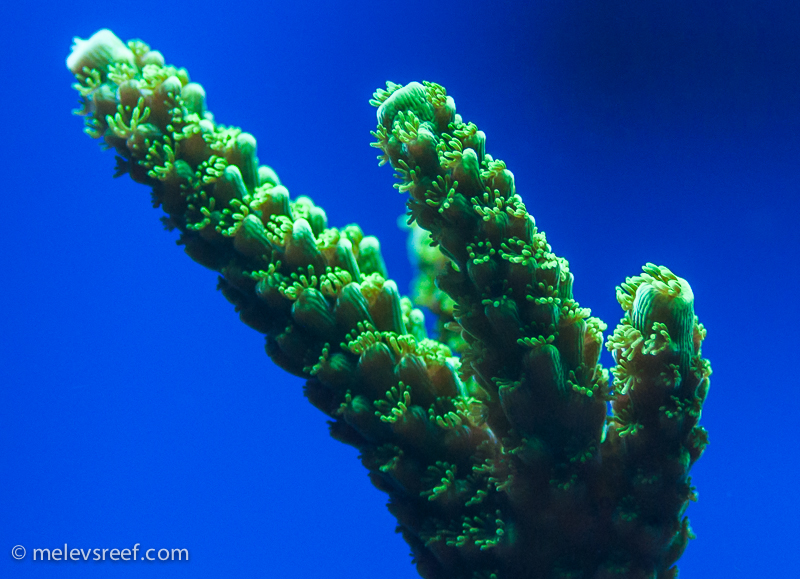
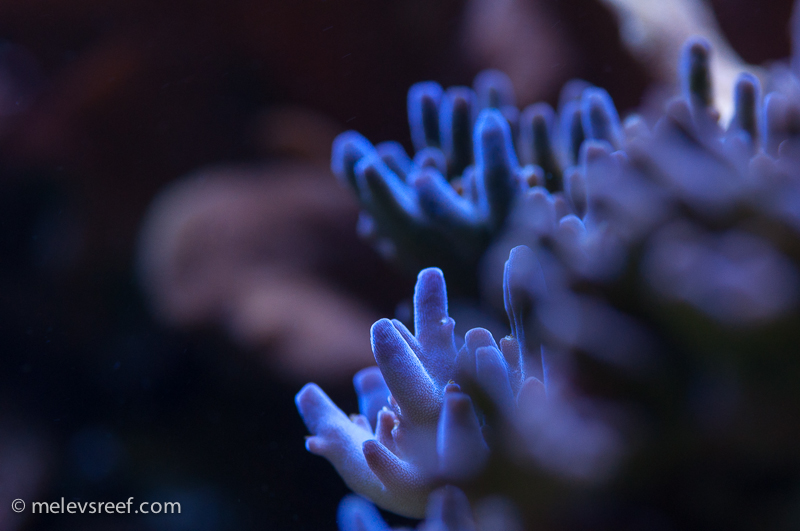
This coral is a "Lime In The Sky" acropora, and the white skin would be misleading to newer hobbyists. That white area actually is light blue, and the tips are a deep green. This is a completely healthy coral.

As you can see in this next picture, a blue coral under blue light is harder to see clearly. That's why it's best to use white light to inspect coral health.

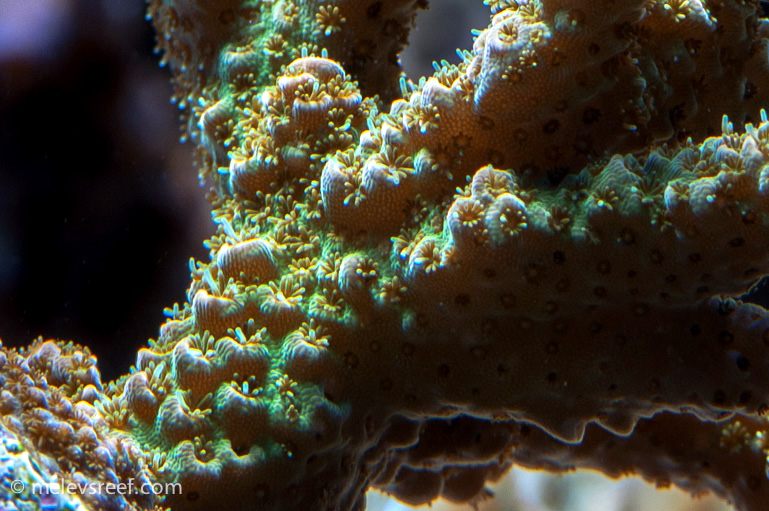
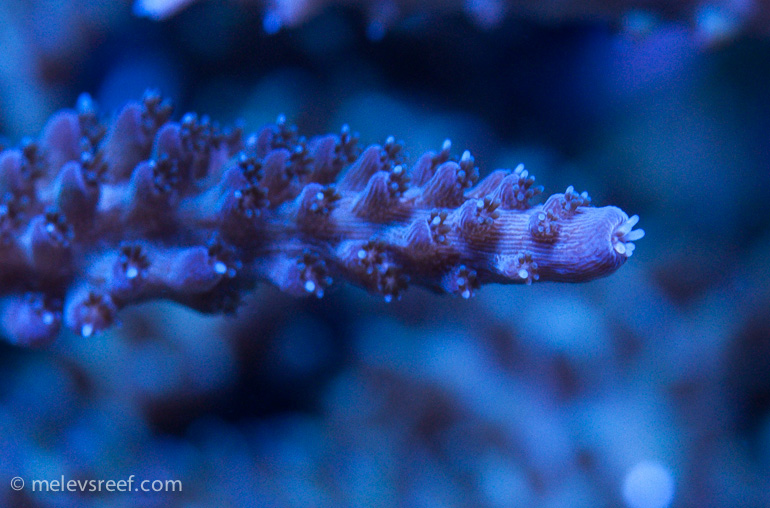
Really study the skin of this next image. Look at the striations in the flesh. Does your acropora look somewhat thick skinned or puffy, or it is paper-thin? Does it look like it could flake or peel off? The green sections appearing in the tips of this Acropora echinata is normal. Most of the polyps are currently retracted.
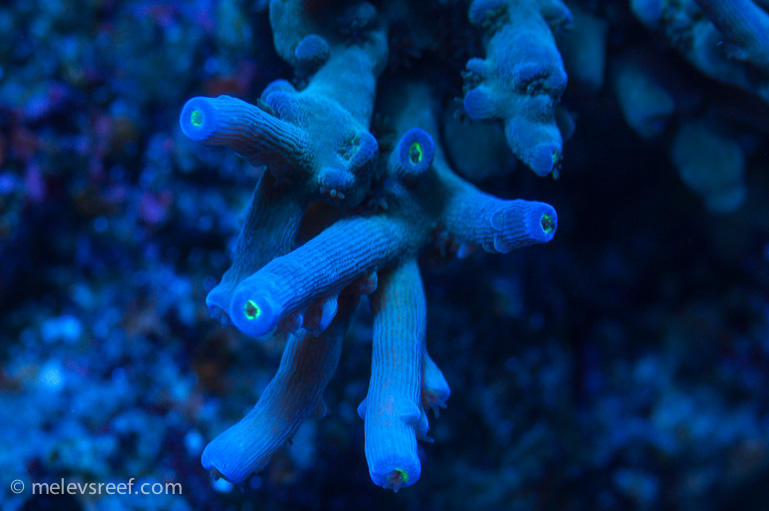
This species of birdnest showcases flesh that visibly moves if you watch it very closely when the flow is on. From certain angles (especially if the coral is back-lit), you'll see the skeleton within the tissue as a darkened shadow.


The pattern of this coral's tissue is almost maze-like.

The skin of this next colony is gorgeous when seen on a computer screen. You'd need a macro lens or a magnifying glass to appreciate the intricate texture and subtle colors the lights bring out if you are only looking at it inside the aquarium. This is why macro photography is popular.
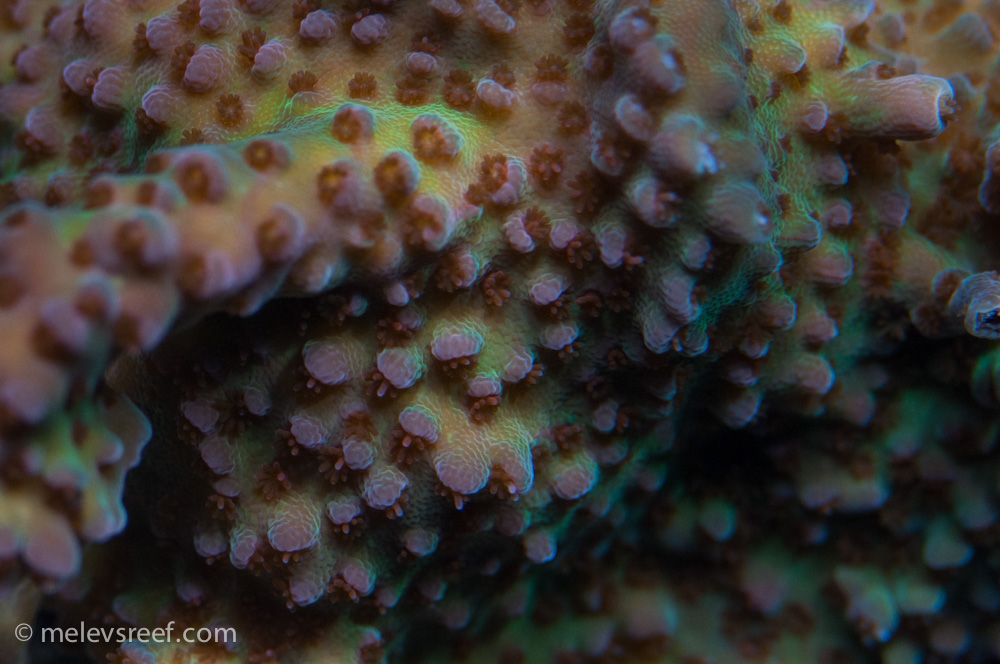

The skin of this "Red Planet" acropora is puddling onto the rockwork, and you can clearly see it is living and healthy since it matches the coral it came from. If your coral has a similar puddle that turns white, that section may be dead. However if the coral itself is still alive, don't worry. It may grow more tissue over the dead section in the future. This is what I refer to as "loss of time" because all the progress you've observed has taken a hit, and now it's time to wait for the coral to recover and then resume growing again. It can be quite frustrating.
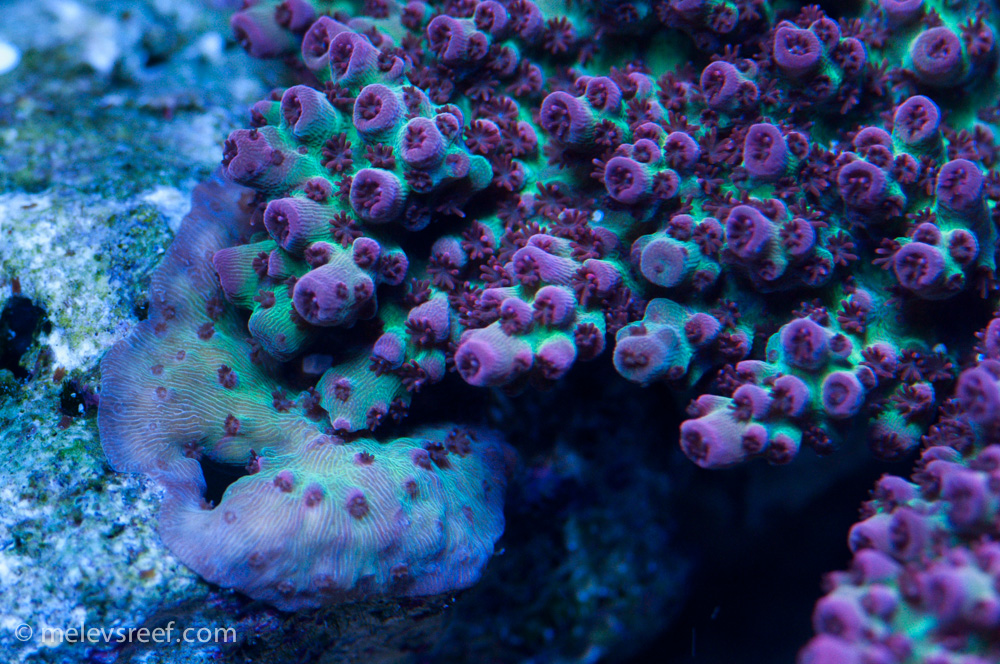
This next image is a good representation of an acropora that isn't really happy. The polyps are retracted and the skin looks somewhat tight. No white skeleton is showing so it's okay, but once it has settled in it will look much nicer.

Here's that same coral months later, new branches and extended polyps hiding the flesh nearly completely from sight.

The lines of this coral's flesh are clearly visible in a macro shot. The polyps look 'fat' and extended, ready to trap any food in the water column.
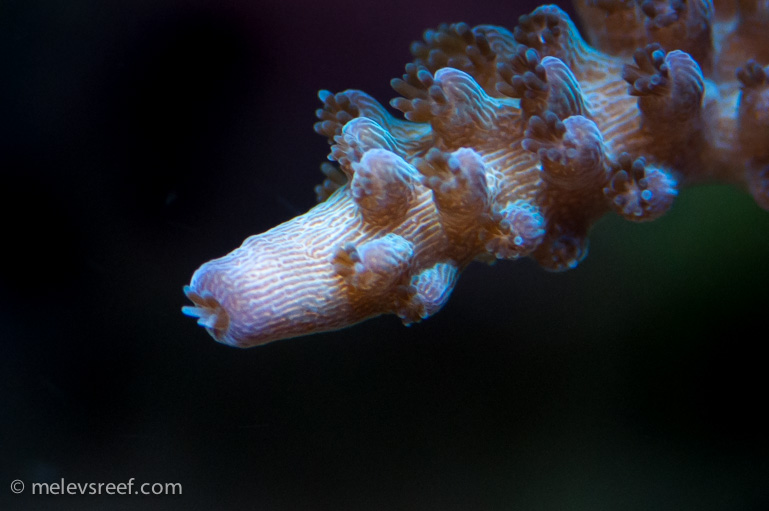
Here's a good example of boring algae in a portion of a larger colony. The following two pictures show skeleton that looks greenish. I took the pictures, then cut off this section. New skin covered that exposed cut over time which took about four weeks. The rest of the colony continues to live.
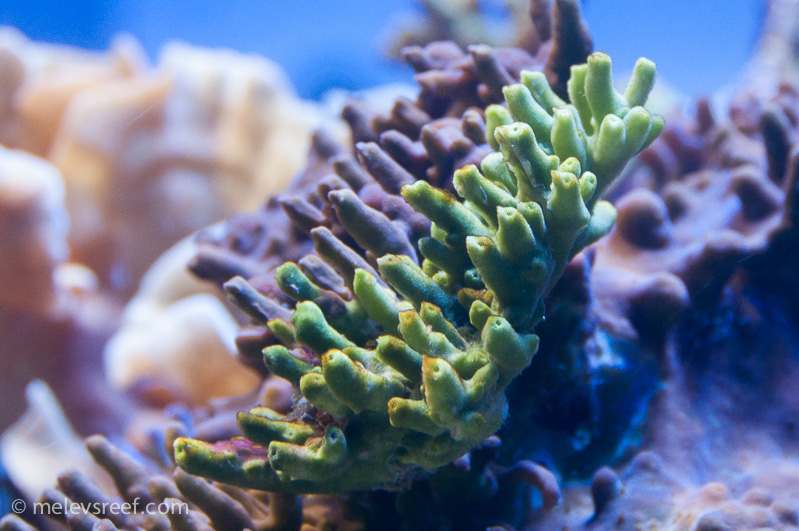
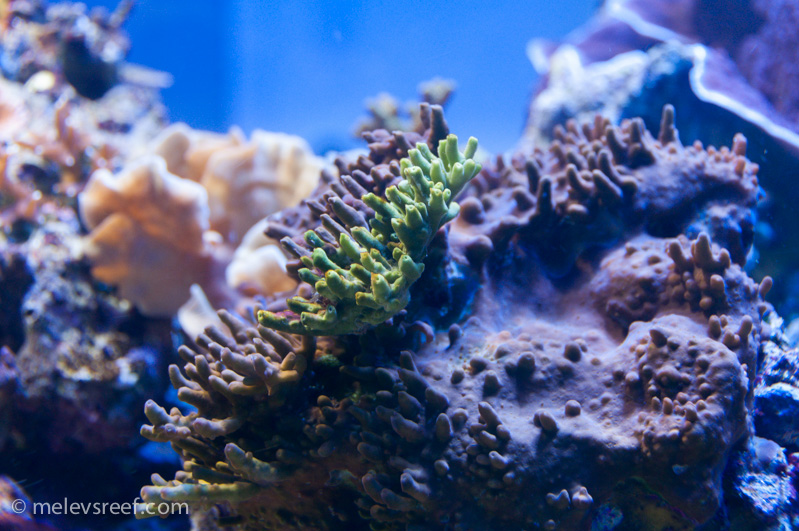
Here's a coral that was dying, but the tip still had some flesh. You can see the porous skeleton (white section in the lower portion of the image), and the green tissue of the acropora. Also, a bright yellow thing was visible. That's a red bug, a flea that chews on acropora corals irritating the flesh. These pests are not welcome in our aquariums.
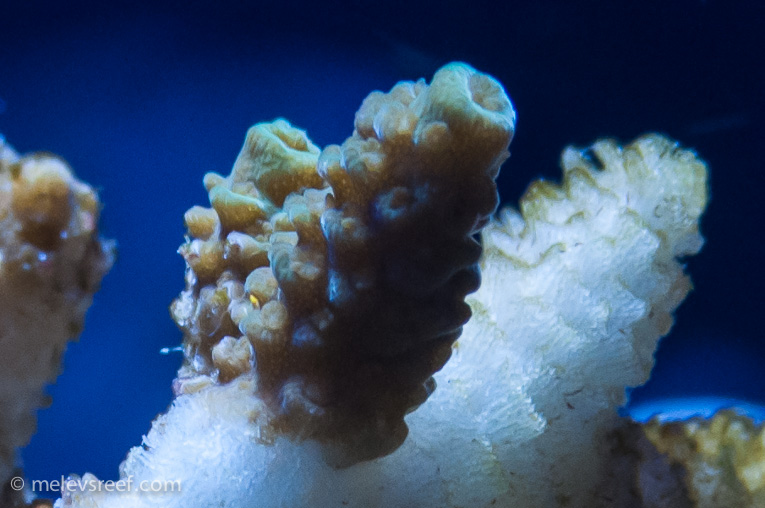
I didn't touch this coral, hoping for the best. You can see some healthy flesh on the frag plug area as well as the branch to the left, but the skin is actually quite thin. Within a few weeks, none of it survived. Why didn't I cut off a frag and hope to save some? Because the coral is already stressed and in my experience, handling, cutting, gluing and moving the living portion into a new spot is just as stressful. Rarely will I end up with some to grow out, so I prefer to wait for it to stop progressing and trim off the surviving parts to grow out, once the coral has settled down.
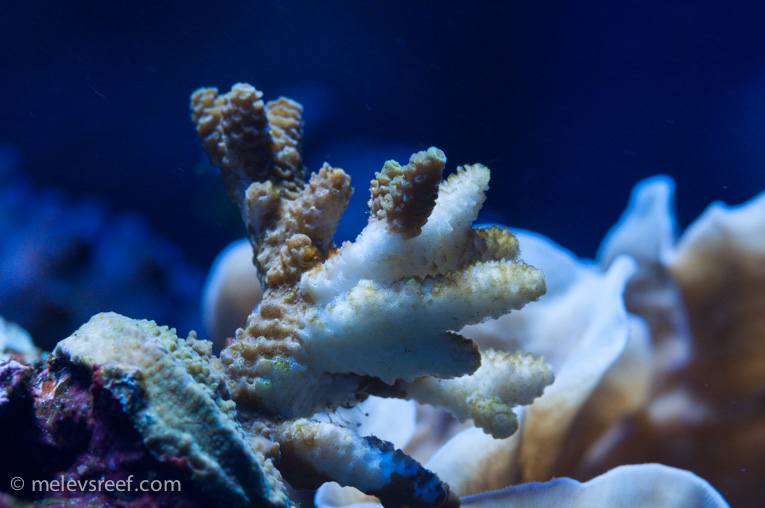
The skin of this blue tortuosa has serious texture, and almost looks like woven fabric.
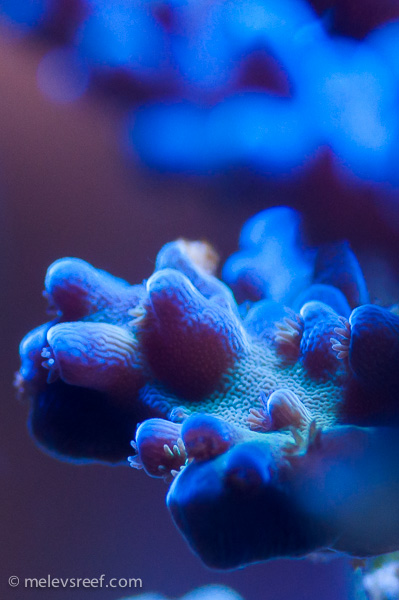
This birdsnest displays vivid green skin, and the dark blue polyps are in perfect rows. Birdsnest corals are great beginner corals because they grow fast and fill in areas of the reef tank nicely. However, due to their fast metabolism, they seemingly can die rapidly -- like wildfire (overnight). When I see this happen, I leave it alone. Usually a few pieces will survive, which I'll trim off after they've stayed alive for another week. The main colony - now dead - will be removed and the living bits will be secured in empty spaces for repopulation.
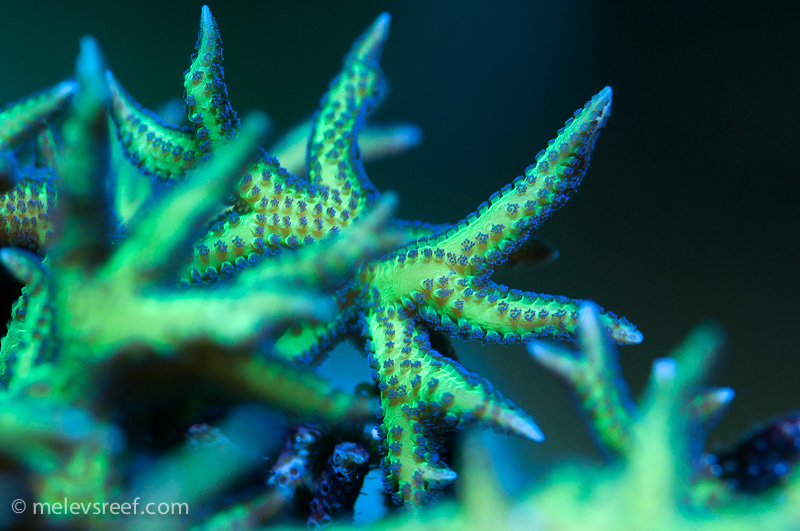
The view from the front of the tank doesn't show everything as you can see in this next shot. The coral "looks okay to me," but a closer inspection from above is best. The light blue (or whitish tips) are often attributed to new growth. This coral is healthy.
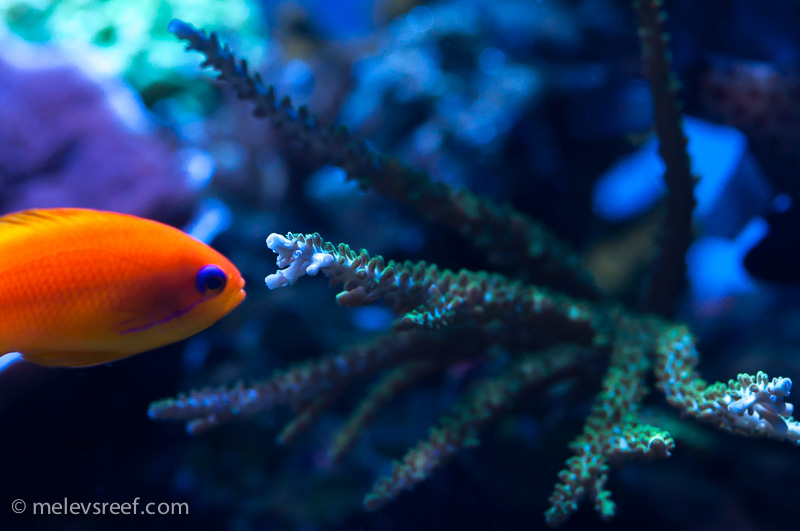
If the tips are bone white or have turned brown, those areas would likely be burnt (often caused by too much light or an alkalinity swing). The best solution is to trim the brown tips off so the coral can heal. Later it will resume with new growth. If you ignore a coral with burnt tips, algae will take hold and the coral's growth will be halted. Algae will infest the colony and smother it if left unabated.
Any coral that dies in my tank, I'll watch for any trace of life. If I spot even a few tiny polyps, that "SPS DNA" is all I need to start anew. I'll trim away the decay, and glue that skeleton hosting a small bit of life to the rockwork and let it grow out. No reason to give up unless it's 100% gone.
Finally, this is a gorgonian that is completely unrelated to this article. I just had to share it because the texture reminds me of tree bark. It's an uninteresting beige coral compared to SPS species, but with a macro lens you'll see some amazing geometry. Plus the movement of gorgonians in a reef tank add something nice.
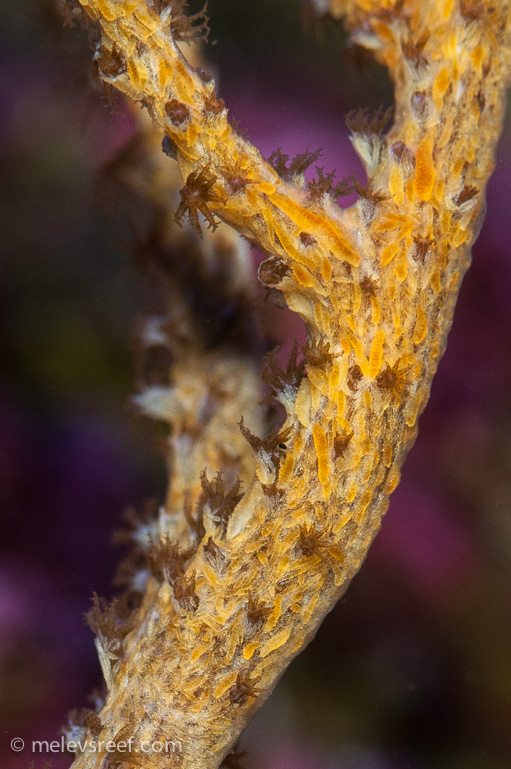
Recognizing healthy SPS tissue is key to longterm success. Know what your corals should look like, and watch closely for any sudden variation in case you need to make minor corrections to keeping them thriving.
Happy reefing!



 Menu
Menu






Rate this article